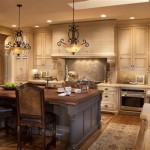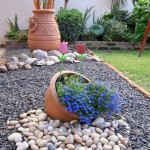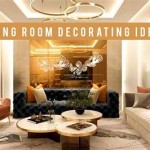Modern Rustic Decor Ideas: Blending Nature and Contemporary Design
Modern rustic decor harmoniously blends the rugged charm of natural elements with the sleek lines and functionality of contemporary design. This style prioritizes comfort, warmth, and authenticity, creating inviting spaces that feel both sophisticated and grounded. It eschews overly ornate or polished finishes, instead celebrating imperfections and the inherent beauty of raw materials. Modern rustic is not simply about recreating a traditional farmhouse aesthetic; it refines and elevates it for modern living.
Achieving a successful modern rustic interior requires careful consideration of materials, color palettes, furniture selection, and textural layering. The key is to balance the old and the new, the rough and the smooth, creating a space that feels both timeless and current. It's about appreciating the stories behind reclaimed wood, the comfort of handcrafted textiles, and the visual interest of natural textures. This approach promotes a sense of calm and connection to the environment, offering a sanctuary from the often-frantic pace of modern life.
Key Point 1: Embracing Natural Materials
The foundation of modern rustic decor lies in the extensive use of natural materials. Wood, stone, metal, and leather form the core of this design style, providing both visual and tactile depth. Instead of hiding these materials, their inherent characteristics are celebrated. For instance, exposed beams in ceilings, whether original to the structure or added as a design element, create a dramatic rustic statement and add architectural interest.
Wood is undoubtedly the most prominent material. Reclaimed wood, in particular, adds character and sustainability to the design. It can be used for flooring, accent walls, furniture, and even smaller decorative items. Its inherent imperfections, such as knots, grain variations, and nail holes, are considered assets, adding to the overall charm and authenticity. When using new wood, opt for species with pronounced grain patterns and consider staining or finishing techniques that highlight the natural beauty of the wood.
Stone, whether natural or manufactured veneer, introduces another layer of texture and visual weight. Fireplaces are a classic application of stone, creating a focal point and adding warmth to living spaces. Stone can also be incorporated into walls, flooring (particularly in entryways or bathrooms), or as decorative accents. The rough texture of stone contrasts beautifully with smoother elements, creating a balanced and visually appealing composition.
Metal, often in the form of blackened iron, copper, or brass, adds an industrial edge to the rustic aesthetic. It can be used for lighting fixtures, hardware, furniture legs, and decorative accessories. The contrast between the warmth of wood and the coolness of metal creates a harmonious balance and prevents the space from feeling overly rustic or sentimental. The use of metal also adds a touch of modernity, keeping the design grounded in contemporary sensibilities.
Leather, primarily used for upholstery, seating, and accent pieces, introduces a luxurious and durable element. Distressed leather, with its natural variations and imperfections, is particularly well-suited to the modern rustic style. It adds a sense of warmth, comfort, and sophistication. Leather can be paired with other natural materials, such as wood and wool, to create a cohesive and inviting atmosphere.
Key Point 2: Establishing a Neutral Color Palette with Accent Colors
The color palette for modern rustic decor typically revolves around neutral tones inspired by nature. Whites, creams, grays, and browns form the base, creating a calming and versatile backdrop for other elements. Lighter shades of these neutrals help to maximize natural light and create a sense of spaciousness, while darker shades can add depth and drama. Accent colors are then strategically incorporated to add visual interest and personality.
White walls are a common choice, providing a clean and modern foundation for rustic elements. Different shades of white, from warm ivory to cool off-white, can be used to create subtle variations and avoid a sterile or clinical feel. Texture, introduced through materials like shiplap or textured plaster, prevents white walls from appearing flat or uninteresting. The use of white also allows natural materials, like wood and stone, to take center stage.
Gray is another popular neutral choice, offering a sophisticated and versatile alternative to white. Gray can range from light, airy shades to deep, charcoal hues, each creating a different mood. Lighter grays work well in smaller spaces, while darker grays can add drama and create a cozy atmosphere in larger rooms. When using gray, it's important to consider the undertones to ensure it complements the other colors and materials in the space.
Browns, ranging from light beige to rich chocolate, connect the interior to the natural world. Wood tones naturally introduce brown into the palette, but it can also be incorporated through fabrics, leather, and other decorative elements. Varying the shades of brown adds depth and dimension to the design, preventing it from feeling monotonous. Consider using different wood finishes, from light and airy to dark and weathered, to create visual interest.
Accent colors are used sparingly to add pops of personality and prevent the neutral palette from feeling bland. Earthy tones, such as greens, blues, and reds, are often used to complement the natural materials. Sage green, for example, can bring a touch of nature indoors, while deep blues can add a sense of calm and sophistication. Reds, often in muted or earthy shades, can add warmth and energy to the space. The key is to use accent colors strategically, focusing on a few key areas to create visual impact.
Key Point 3: Layering Textures for Depth and Interest
Texture is an essential element in modern rustic decor, adding depth, visual interest, and tactile appeal. Layering different textures creates a more dynamic and engaging space, preventing it from feeling flat or one-dimensional. This can be achieved through the use of various materials, fabrics, and decorative accessories. The interplay of rough and smooth, soft and hard, creates a balanced and inviting atmosphere.
Rugs are a powerful tool for adding texture to flooring. Natural fiber rugs, such as jute, sisal, and wool, are excellent choices for the modern rustic aesthetic. Their natural textures and earthy tones complement the other materials in the space. Consider layering rugs to add even more depth and visual interest. A smaller, patterned rug can be placed on top of a larger, neutral rug to create a focal point and add a touch of personality.
Textiles, such as blankets, throws, and pillows, are essential for adding warmth and comfort. Chunky knit blankets, linen throws, and wool pillows are all excellent choices. Look for fabrics with interesting weaves, textures, or patterns. Consider incorporating natural dyes or handcrafted textiles to add a unique and artisanal touch. Layering different textures and patterns creates a cozy and inviting atmosphere.
Wall décor can also contribute significantly to the textural landscape of a space. Consider incorporating reclaimed wood panels, textured wallpaper, or woven wall hangings to add visual interest. Shelves displaying collections of natural objects, such as stones, shells, or dried flowers, can also add texture and personality. Avoiding overly polished or refined finishes is key; instead, embrace the imperfections and irregularities of natural materials.
Furniture selection plays a crucial role in creating a textured environment. Upholstered pieces in linen, leather, or wool provide both comfort and visual interest. Wooden furniture with visible grain patterns and imperfections adds to the rustic charm. Metal accents, such as iron legs or hardware, contribute to the overall textural balance. When selecting furniture, consider the scale and proportion of each piece to ensure it complements the other elements in the space.
Lighting fixtures provide an opportunity to add both visual and tactile texture. Metal pendants, woven lampshades, and Edison bulbs contribute to the overall aesthetic. Consider using dimmers to control the intensity of the light and create a warm and inviting atmosphere. The interplay of light and shadow can further enhance the textures in the space, adding depth and dimension.
Incorporating greenery is a final, but critical, element in layering textures. Indoor plants bring life and vitality to the space, adding a touch of nature and softening the hard edges of the furniture and architectural elements. Consider using a variety of plants with different textures and shapes to create visual interest. Placing plants in rustic pots or baskets further enhances the overall aesthetic.

24 Modern Rustic Decor Ideas Room Inspiration For Bedrooms Living Rooms And Kitchens
:strip_icc()/cdn.cliqueinc.com__cache__posts__231321__rustic-home-decor-231321-1501637299245-image.700x0c-d425f9c6c2df482ea759571089d443a3.jpg?strip=all)
15 Modern Rustic Home Design And Décor Ideas

Modern Rustic Interior Design Ideas For Your Home Cafe

Modern Rustic Decor Blend Tradition With Contemporary Style

44 Awesome Modern Rustic Living Room Decor Ideas Pimphomee Idée Déco Salon Moderne Idee Deco

What Is A Modern Rustic Home And 25 Examples Digsdigs

55 Awe Inspiring Rustic Living Room Design Ideas

40 Rustic Decor Ideas Modern Style Rooms

30 Rustic Living Room Ideas For A Cozy Organic Home Modern Decor Farmhouse

Modern Rustic Decor For The Home
Related Posts







